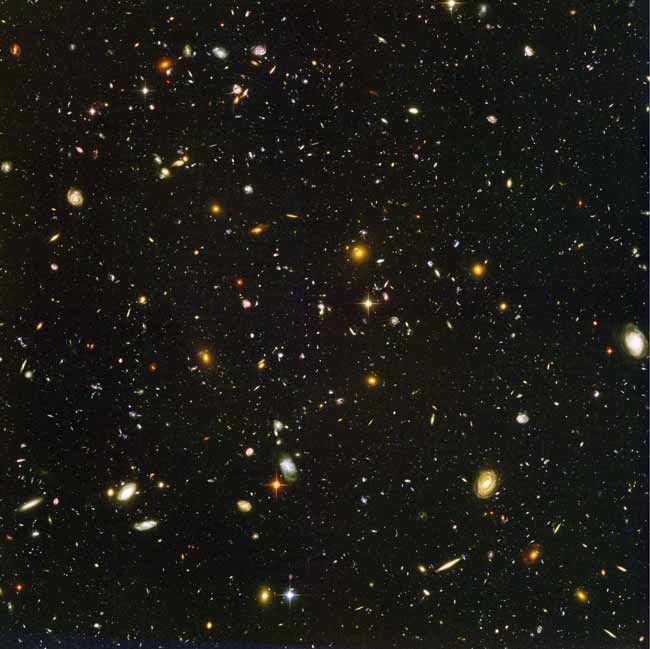Hubble Spots 500 Galaxies in Early Universe

Recent images from the depths of cosmos show more than 500 galaxies in the early universe, scientists reported today.
The galaxies-viewed with the Hubble Space Telescope-existed less than a billion years after the Big Bang, the purported birth of our universe, and flourished when the cosmos was less than 7 percent of its current age. They are smaller than most of today's giant galaxies and sport a blue shade, a signature of blazing star births.
The blue light, which took almost 13 billion years to arrive on Earth, was shifted to a red color because the expansion of space stretches the wavelength of light. This redshift helps astronomers figure out when the light was emitted.
"Finding so many of these dwarf galaxies, but so few bright ones, is evidence for galaxies building up from small pieces-merging together as predicted by the hierarchical theory of galaxy formation," said study leader Rychard Bouwens, an astronomer at the University of California, Santa Cruz.
Hierarchical theory of galaxy formation proposes that larger galaxies formed as smaller galaxies were smashed together.
Bouwens and his colleagues also found that these early galaxies were producing stars at a very fast rate, almost ten times the rate of star production in nearby galaxies. This observation sways the debate of whether the hottest stars in the early universe provided enough radiation to reheat the hydrogen gas that had started cooling since the Big Bang.
The universe's theoretical birth generated lots of hot hydrogen and helium ions that quickly expanded. But the expansion of space soon cooled the matter. The ultraviolet radiation from the galaxies, however, turned the cold, dark hydrogen to hot and transparent plasma over a few hundred million years.
Get the Space.com Newsletter
Breaking space news, the latest updates on rocket launches, skywatching events and more!
"Seeing all of these starburst galaxies provides evidence that there were enough galaxies 1 billion years after the Big Bang to finish reheating the universe," said study team member Garth Illingworth of the University of California, Santa Cruz. "It highlights a period of fundamental change in the universe, and we are seeing the galaxy population that brought about that change."
The finding will be detailed in the Nov 20 issue of the Astrophysical Journal.
- The End of Small Galaxies
- Galaxies in Young Cosmos More Massive and Mature than Expected
- Hubble Sees Huge Stellar Nursery in Nearby Galaxy
- The Strangest Things in Space
Join our Space Forums to keep talking space on the latest missions, night sky and more! And if you have a news tip, correction or comment, let us know at: community@space.com.










